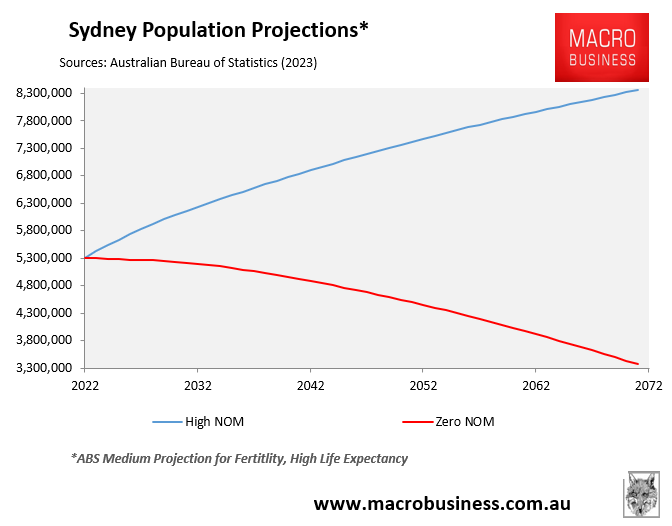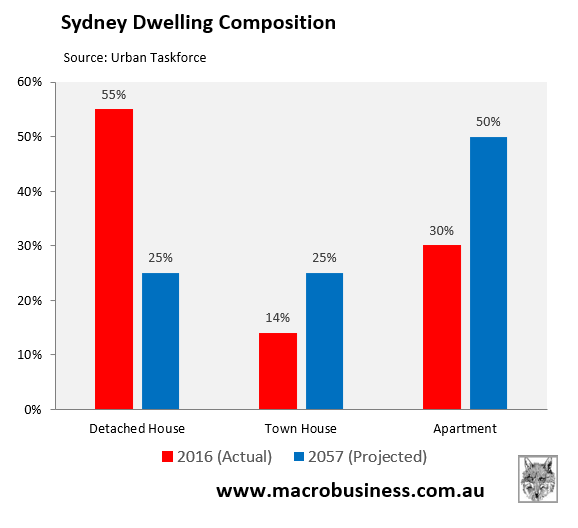Last month, the NSW Productivity and Equality Commission spruiked higher towers, smaller apartments, less storage and natural light, smaller balconies, and fewer car spaces as the solution to the state’s housing crisis:

“Higher-density zones around train stations would double in size… The NSW productivity commissioner is also recommending design standards be relaxed to allow the construction of smaller apartments without access to parking, storage or direct sunlight”…
“The commission has also recommended minimum apartment size requirements be removed, to improve feasibility for developers and affordability for buyers”.
“Balcony size rules, storage requirements, and guidelines for “family-sized” units were also unnecessary, the commission found”.
I lambasted the NSW Productivity and Equality Commission, arguing that its recommendations would deliver Sydney a ‘Bladerunner’, slum-like future.
I also argued that the recommendations would do little to improve housing affordability so long as the federal government continued to import large volumes of renters via mass immigration:

In 2023 alone, 179,000 net overseas migrants landed in New South Wales, requiring around 74,000 new homes.
As a result, the state’s housing shortage is being driven directly by the federal government’s mass immigration policy, which is projected to continue indefinitely:

The Australian’s Judith Sloan published a fantastic article slaying the NSW Productivity and Equality Commission for ignoring the immigration elephant steamrolling the state’s housing market.
Sloan notes that “excessive government spending on infrastructure has dragged workers and materials away from housing construction”, stifling supply.
“This is not market failure”, Sloan argues. “It’s an obvious consequence of bad government policy and the failure to prioritise and appropriately sequence infrastructure projects”.
Meanwhile, the demand-side of the housing market is being pumped-up by extreme levels of immigration.
“Demand has been allowed to grow far too rapidly through the massive increases to net migration since the end of the pandemic”, Sloan argues.
“It is just not possible for a market to adjust to this sort of surge in demand”.
“Until the federal government really acts to reduce net migration – it has failed to meet any of its targets thus far – there is no chance the housing situation will improve soon”, Sloan contends.
Judith Sloan also noted the “the monumental construction failures in NSW, including the Mascot and Opal buildings”, which are only “the tip of the iceberg” and have left current owners and tenants dealing with massive defects and crippling rectification costs.
“It is hopelessly optimistic to think these problems have gone away”, Sloan added. “Workers have been enticed to work on large-scale infrastructure projects, thereby potentially reducing the average quality of the workers in housing construction”.
Judith Sloan is spot on, of course.
Why consign residents into living in expensive high-rise shoebox apartments without car parks, adequate storage, or natural light and small balconies when the federal government can simply slash net overseas migration to ease the demand for new housing?
Under Urban Taskforce projections, half of all Sydneysiders will be stuffed into tiny apartments by 2056, while only one quarter of residents (mostly the wealthy) will live in a detached house with a backyard:

How is this an advancement of living standards? Is this the future that Sydneysiders want?
Say no to excessive levels of immigration.

